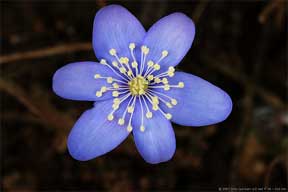The delicate blossoms of the anemone are true harbingers of spring in the garden. Truly an aristocrat in color and habit of growth, this herbaceous perennial should be planted by all gardeners. The anemone is frequently referred to as windflower, since the botanical name is derived from the Greek word anemos, which means wind. Incidentally, the word is pronounced a—NEM-a-nee, to rhyme with “an enemy.” Botanically, these plants are members of the Ranunculacea family, and make up a large genus of many varieties, all of which may be cultivated for their beautiful flowers and unusual foliage. Both spring blooming and fall-blooming species are included. For the US, best results will be obtained by using these plants as annuals, for local or seasonal color.

How to Grow Them
The plants may be grown either from tubers or seeds. Propagation from seeds is usually slow and uncertain, and in areas with short growing seasons it is not recommended. The planting of the tubers is recommended for more certain results.
These tubers, which look like small calla lily bulbs, are usually very hard and black in color. By soaking the tubers in water at room temperature for one hour before planting, you can speed up growth. Plant from 2 to 3 inches deep, and space four to six inches apart. The best soil is one that is rich in humus and well drained; however, any good garden soil will usually give satisfactory results. Tubers may easily be started in pots or other containers indoors and planted out after danger of killing frost has passed, thus increasing the period of flowering.
Generally, the culture can be about the same as that given tulips or hyacinths. As with these plants, an abundance of water at flowering time is beneficial. Also, light feeding of a balanced plant food or liquid fertilizer gives returns in quality of flowers that more than compensate for this chore. The time of blooming can be regulated by the time of planting. After their first blooming they will usually bloom again later, giving a succession of color in the garden.
Protect Against Heat
Mulches should be applied, as hot days come, to keep the roots cool. Leaves or hay are used in many areas for this purpose, while pea gravel and expanded shale may be used in areas where a hay or leaf mulch is not available. Mulches not only cool the roots of these plants, but prevent unnecessary loss of moisture and provide protection for the tubers if left in the soil over winter. However, one should not treat the anemone as perennial, but rather as annual, for best results… lift the tubers in early fall and store them like other bulbous plants for replanting the next season with limited success.
There are many companion flowers that can be grown with anemones… clematis, ranunculus, columbine and delphinium are all family relatives, and therefore combine well in the garden, both as to cultural requirements and color harmony.
